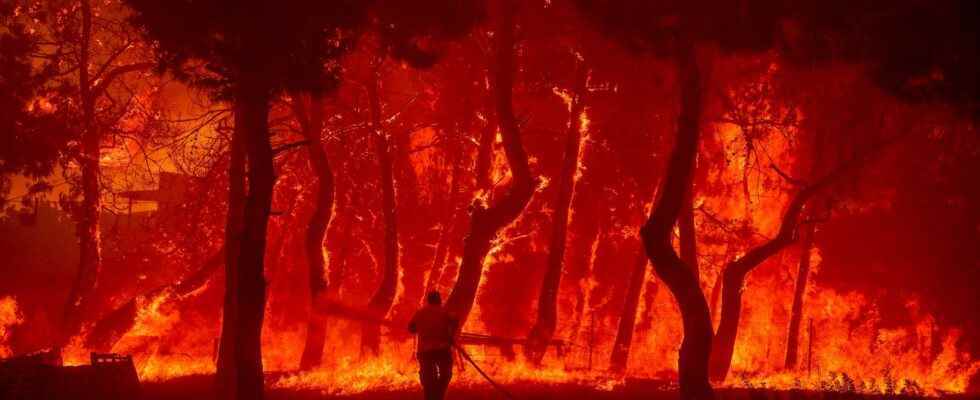How the protective belts around the villages atrophy
Many people have migrated from small towns to rapidly growing cities. But life there has become more stressful due to the steadily increasing population. “Since the 1980s, more and more people have bought holiday homes near the cities,” explains Xanthopoulos. In addition, new suburbs sprang up quickly and without careful planning. The metropolises proliferated in the surrounding countryside. Transitional areas gradually formed between town and country, where the risk of fire is particularly great. There are often people out there, barbecuing, burning rubbish and engaging in other fire-prone activities. Fires therefore break out much more frequently and easily than before – the danger to people increases.
While more and more people are moving to the city, the rural population is shrinking at the same time. Younger people are usually drawn away, which is why the average age in the country is rising. “As a result, many areas are no longer cultivated as intensively or not at all,” says Goldammer. This development is literally extremely dangerous. This is because traditional land uses reduce the risk of fire.
“Shepherds, for example, used to burn off the old grass from last year because the animals wouldn’t eat it anymore,” explains the expert. So the sheep filled their stomachs with freshly sprouted greens. At the same time, potential fuel disappeared with the dry grass. But since people have been drawn to the cities, hardly anyone has maintained the old techniques. “Perhaps these methods could be reactivated,” reflects Goldammer. But that would require new laws. In addition, more people would have to learn how to fight fire safely with fire.
»Although Greece has invested more and more money in extinguishing technology since 1998, we are not yet seeing the desired success«(Gavriil Xanthopoulos, Forester)
More and more combustible material is not only left on sheep pastures. The same applies to old fields, gardens, vineyards and olive groves, on which bushes and trees, grass and scrub grow. These areas used to be like fire protection belts around the villages. If a fire had broken out, it found little food on the cultivated areas. However, because traditional agriculture is hardly practiced anymore, this protection is being lost. “So now the fires are hitting the villages with full force,” says Xanthopoulos.
According to his observations, it doesn’t look any better in the woods either. The use of firewood for heating and cooking has declined sharply since the 1980s. The forest administration also no longer has enough money and capacity to remove potential fuel. In many places, the flames are therefore spreading over large, contiguous areas. “Although Greece has invested more and more money in extinguishing technology since 1998, we are not yet seeing the desired success,” says Xanthopoulos.
How fire safety could be improved
So what has to happen? The commission of experts presented a series of recommendations – the responsible state authorities must cooperate more closely, the population should be more involved in fire protection, the fight strategies must be adapted, for example the fire brigade should not only extinguish from the air but also on the ground advance. “Above all, we must place much more emphasis on prevention,” emphasizes Xanthopoulos.
